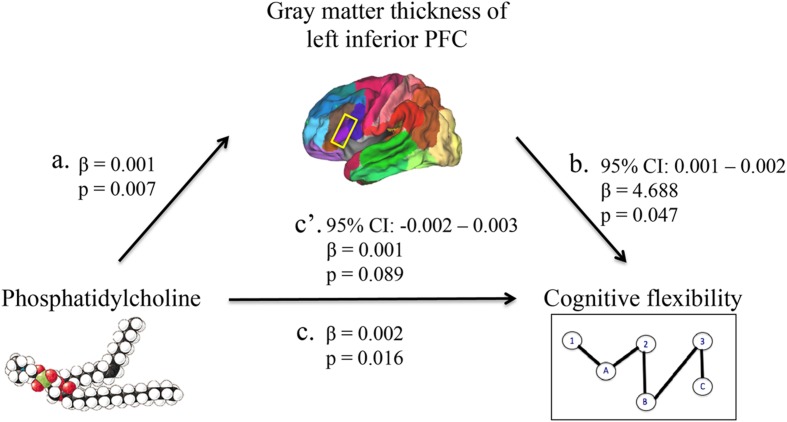FIGURE 2.
A mediation model was used to characterize the relationship between phosphatidylcholine levels, gray matter thickness of regions in the PFC, and cognitive flexibility. Phosphatidylcholine levels positively associated with gray matter thickness of the left inferior PFC (path a). Phosphatidylcholine levels positively associated with cognitive flexibility (path c). The indirect pathway of mediation (i.e., the effect of phosphatidylcholine levels through gray matter thickness of the left inferior PFC on cognitive flexibility; path a–b) was statistically significant. The direct pathway of mediation (i.e., the effect of phosphatidylcholine levels directly on cognitive flexibility, accounting for the effect of gray matter thickness of the left inferior PFC; path c’) was not statistically significant. Therefore, gray matter thickness of the left inferior PFC fully mediated the relationship between phosphatidylcholine levels and cognitive flexibility.

